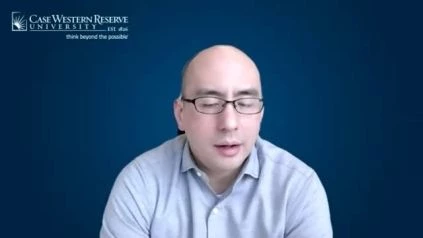Richard T. Lee, MD from Case Western Reserve University speaks about Familiarity With Complementary and Integrative Therapies Among Patients With Cancer and Caregivers.
Link to Article:
https://ascopost.com/news/february-2021/familiarity-with-complementary-and-integrative-therapies-among-patients-with-cancer-and-caregivers/
The research consisted of a survey of patients and caregivers about five complementary and integrative medicine treatments offered at University Hospitals Seidman Cancer Center in Cleveland: acupuncture, massage, meditation, music therapy, and yoga.
The survey was performed by 464 patients and 112 caregivers, for a total of 576 surveys. 65.6 percent of respondents were White, 57.2 percent were female, 74.2 percent had been a patient for less than three years, 73.8 percent had some college education, and 69.1% had a household income of more than $40,000.
Therapeutic massage was most common to respondents (34.2%), followed by music therapy (25.4%) and yoga therapy (23.2%), and acupuncture was least familiar to respondents (23.2%). (20.0 percent ). Acupuncture (46.5%), yoga therapy (46.7%), and meditation therapy (46.7%) were all new to about half of the respondents (44.7 percent ).
When services were recommended by a medical practitioner, average interest in services grew from 53.3 percent to 64.1 percent, including rises from 52.8 percent to 61.1 percent for therapeutic massage, 36.9% to 51.6 percent for music therapy, 35.7 percent to 46.9% for meditation therapy, and 34.6 percent to 47.8% for yoga therapy.
A single session of therapeutic massage (62.3 percent) was the most popular option among respondents, while a single session of meditation was the least popular (43.7 percent ). Overall, less than 20% of respondents were willing to pay more than $60 for any of the facilities, with a significant majority refusing to pay anything for meditation therapy (43.7%), acupuncture (40.9%), music therapy (39.7%), yoga therapy (37.1%), or therapeutic massage (37.1%). (21.4 percent ).
The primary obstacles to accessing complementary and integrative medicine services, according to respondents, were cost (56.0 percent) and lack of awareness (52.1 percent ). Additional obstacles included the services’ location (31.5%), a lack of time (29.2%), and a lack of interest (23.3 percent ).
The investigators concluded: “Overall, a significant proportion of patients and caregivers were unfamiliar with these five integrative therapies. Increasing education, decreasing cost, and a recommendation by medical professionals would improve complementary and integrative medicine usage.â€

